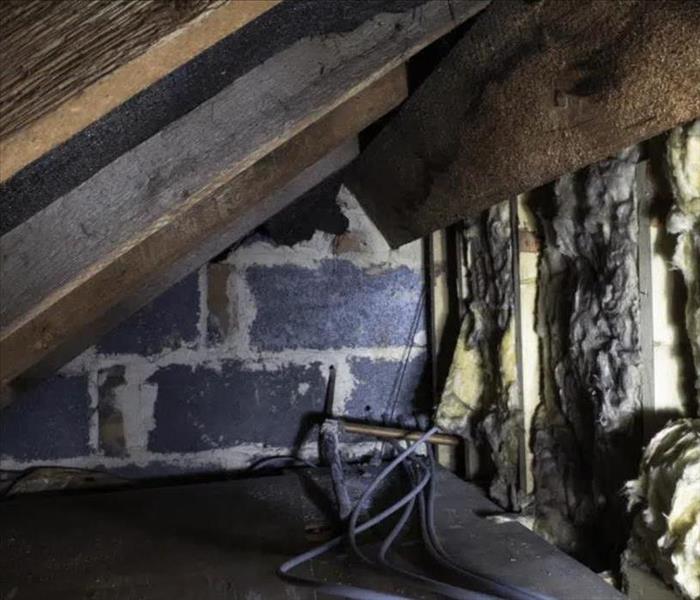Mold In Crawl Spaces
2/1/2023 (Permalink)
What Causes Mold in a Crawl Space?
Excessive moisture can cause mold growth in your crawl space. That moisture can occur naturally from the soil and dirt underneath your home. A leaky pipe or condensation can also contribute to higher moisture levels. Without proper ventilation, moisture can build up and cause mold growth.
6 Ways to Prevent Mold Growth in Your Crawl Space
You can be proactive and prevent mold growth by taking a few precautionary steps. We’ve included six tips that can help avoid mold from forming in the first place.
Tip 1: Inspect your foundation walls.
The first step in crawl space mold prevention is to inspect the foundation walls. Look for cracks or leaks in walls, as well as holes or cracks in the ceilings. Even the smallest gap can allow moisture to seep in.
Tip 2: Check your gutters and downspouts.
You want to make sure to channel rainwater away from your house properly. If it’s flowing toward your home, then it’s a surefire recipe for mold. Ideally, you should direct water flow at least six feet from your home to prevent rainwater from pooling at or near your foundation.
Tip 3: Look for any leaks.
You might have to get your hands dirty for this one, but we recommend checking your crawl space two to three times per year. Inspect the pipes to ensure that none of them are leaking. You should also look for any plumbing leaks above ground too. Since water travels downward, a leak upstairs can easily make its way into your crawl space.
Tip 4: Insulate crawl space pipes.
Earlier, we mentioned that condensation collecting on pipes from fluctuating temperatures could elevate moisture levels in your crawl space, leading to mold. One way to prevent this from happening is to insulate the pipes.
Tip 5: Consider a vapor barrier.
Vapor barriers are unique materials that keep moisture out of your crawl space. Vapor barriers are made of a plastic or foil sheet designed to resist water through the floor, ceiling, wall, or roof. They prevent both the invasion of moisture and the condensation on surfaces.
If you already have a vapor barrier (also referred to as crawl space encapsulation), ensure you remove the original barrier to prevent odor or moisture from being trapped between the two layers.
Tip 6: Adequately ventilate your space.
Good ventilation airs out your crawl space, and in conjunction with a vapor barrier, is very effective in keeping everything perfectly dry. There are multiple ways to ventilate the area, such as:
- Divert a minimal amount of heated air from your HVAC system to the crawl space.
- Install a dehumidifier. Humidity levels shouldn’t be above 30-50%.
- Install an exhaust fan to move crawl space air outside.
- If you have a clothes dryer in your home, ensure the vent flows outside the crawl space.






 24/7 Emergency Service
24/7 Emergency Service
